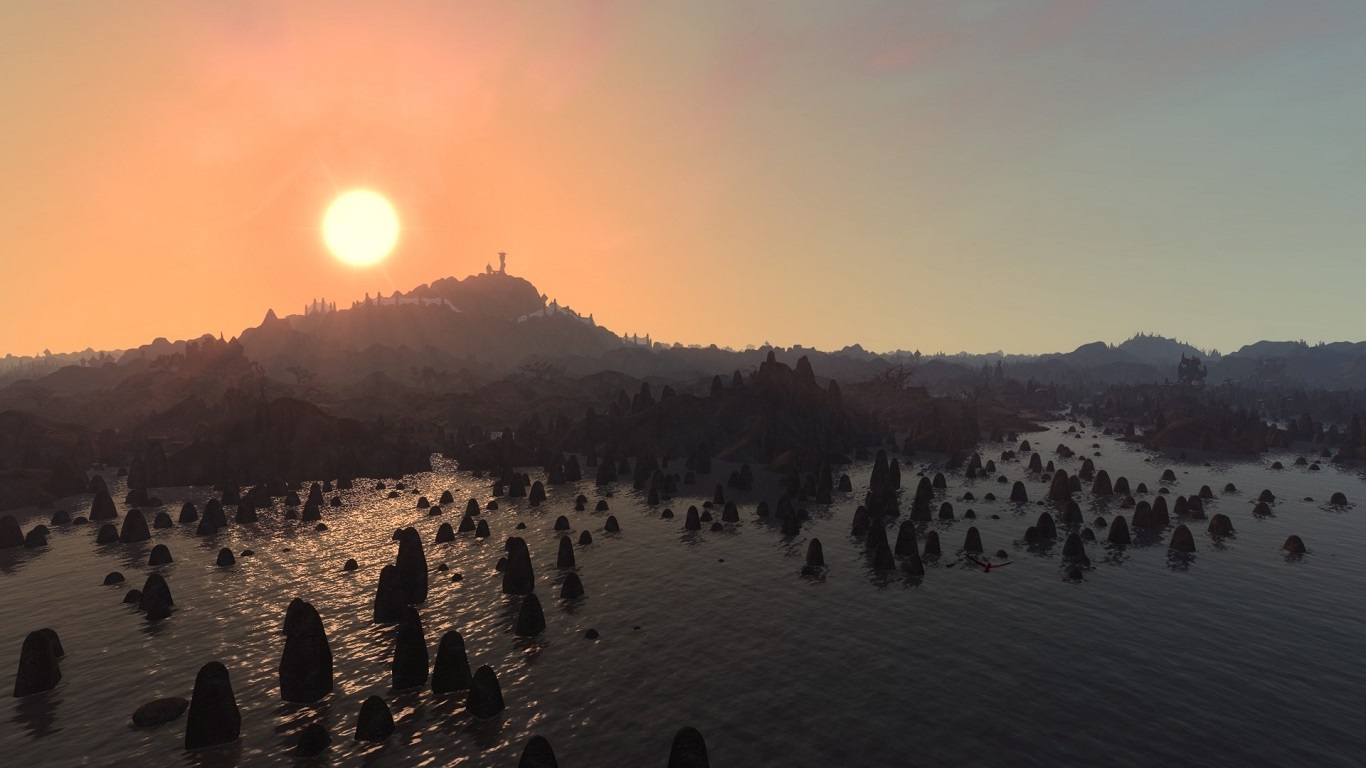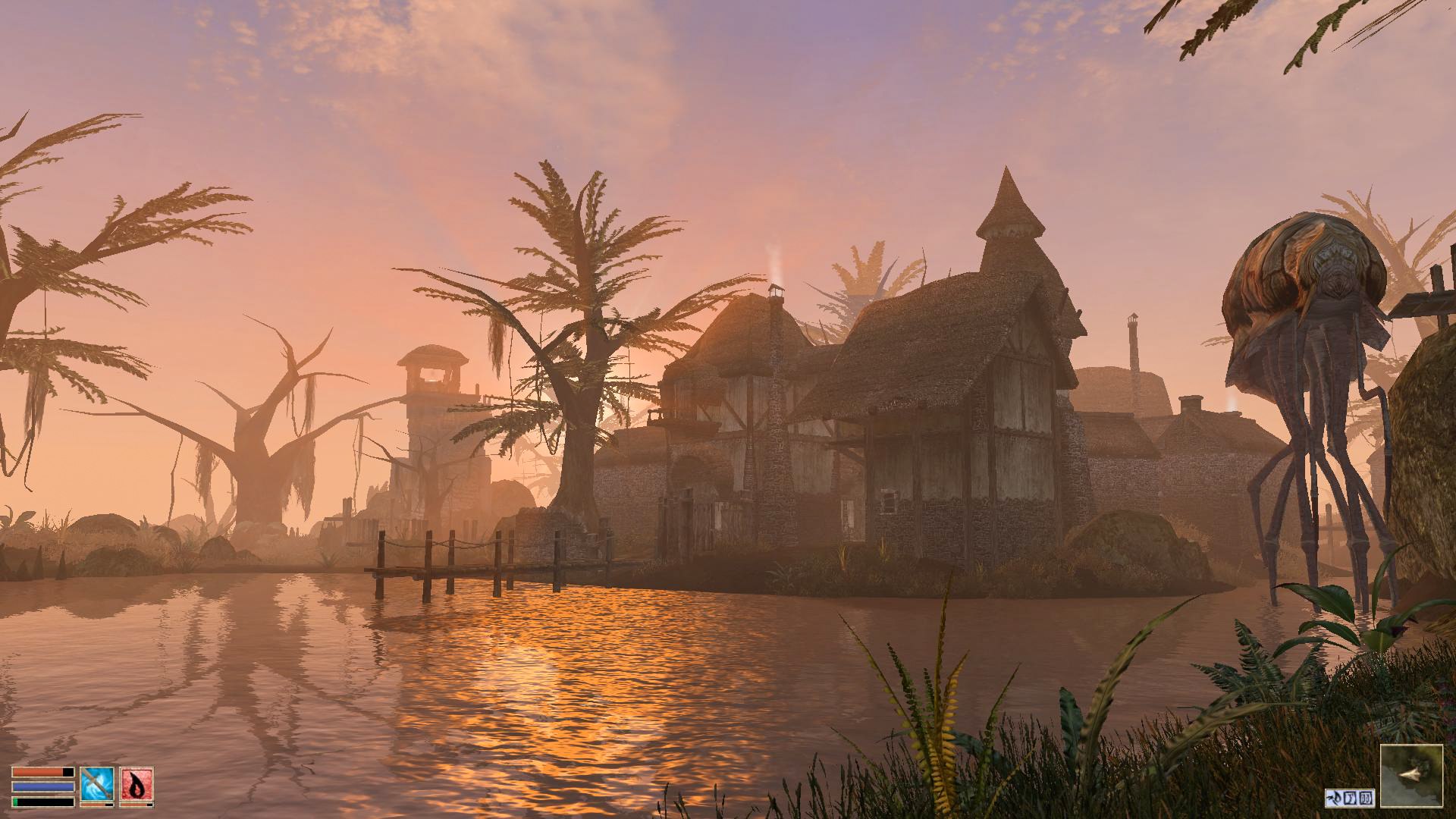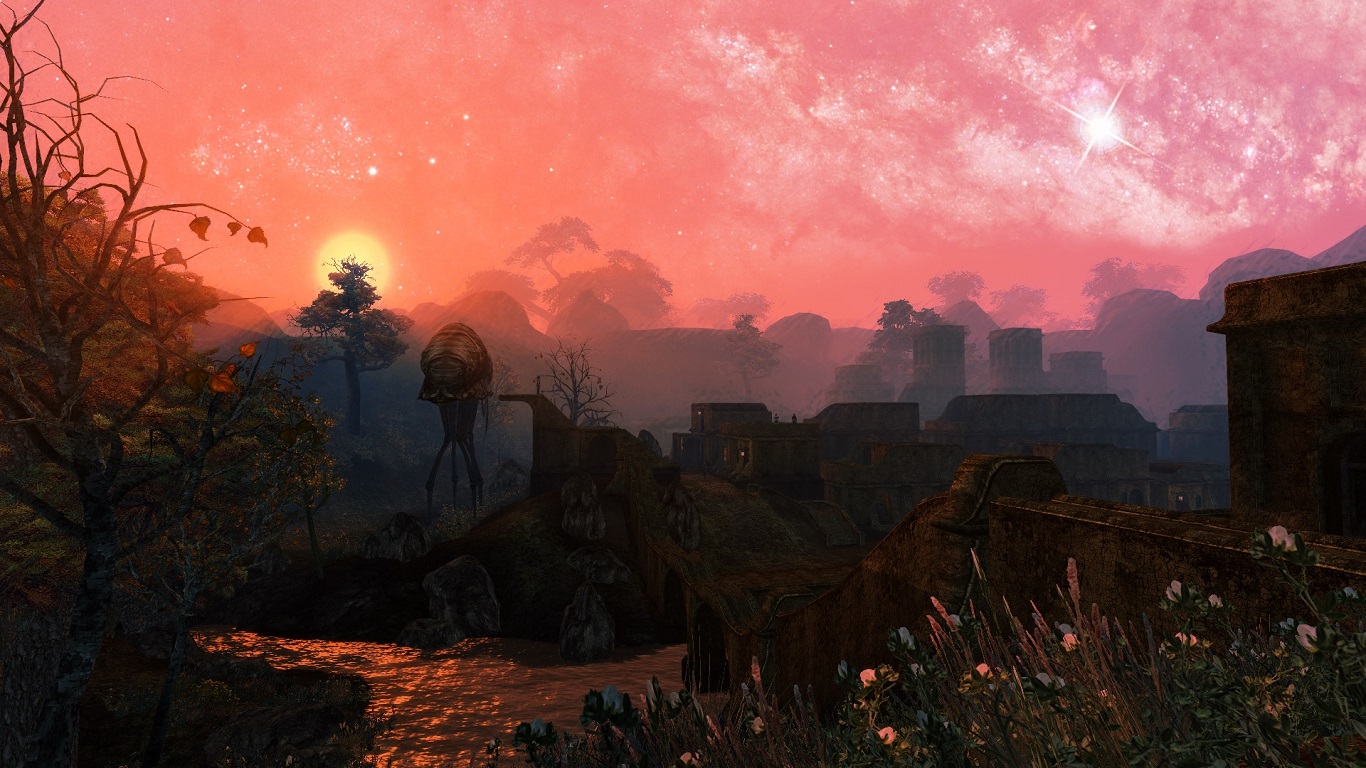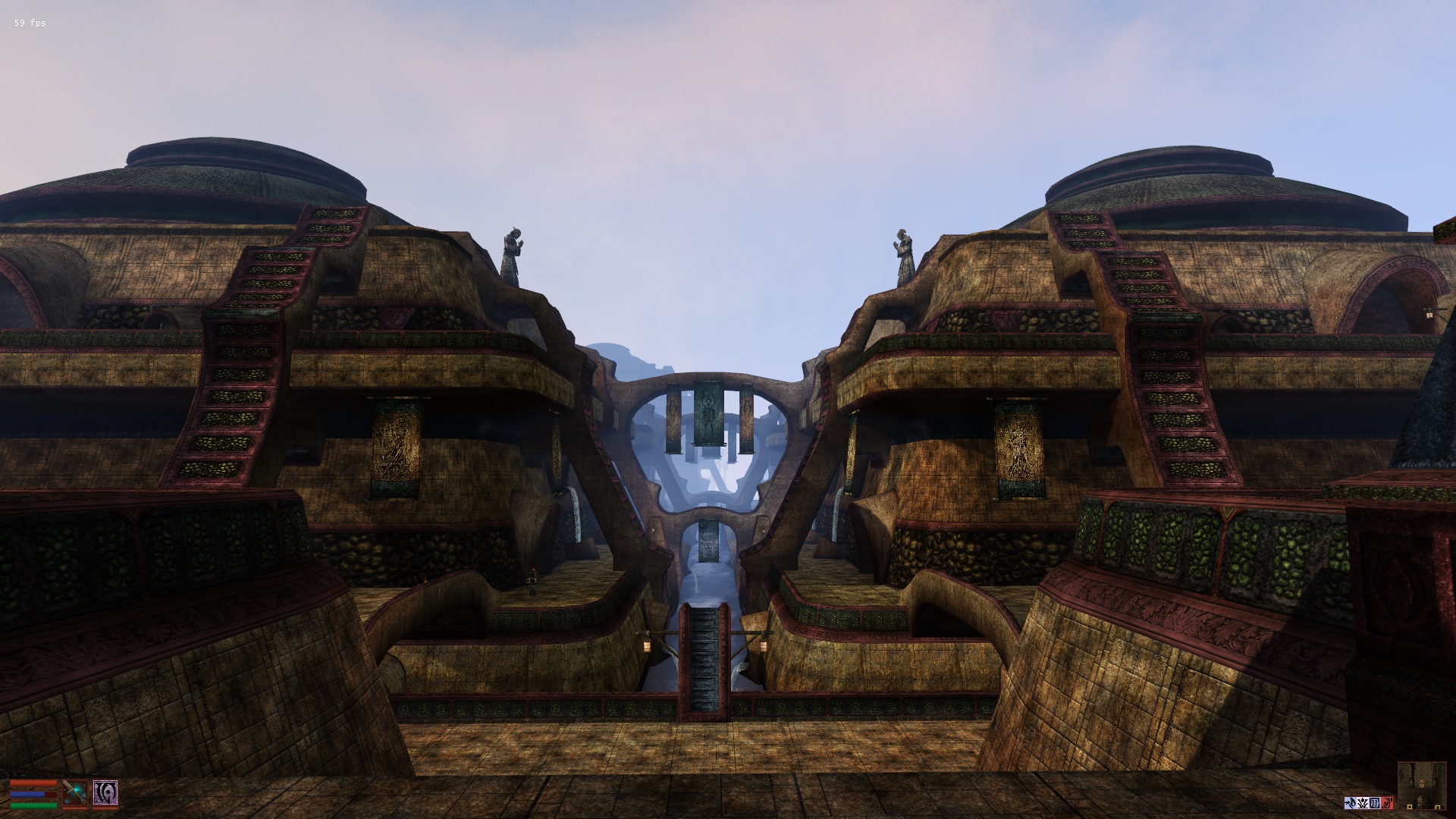INTRODUCTION
The Elder Scrolls III: Morrowind is an open world fantasy action role-playing video game developed by Bethesda Game Studios and published by Bethesda Softworks. It is the third installment in The Elder Scrolls series of games, following The Elder Scrolls II: Daggerfall, and preceding The Elder Scrolls IV: Oblivion. It was released in North America in 2002 for Microsoft Windows and Xbox. The main story takes place on Vvardenfell, an island in the Dunmer province of Morrowind, part of the empire of Tamriel. The central quests concern the deity Dagoth Ur, housed within the volcanic Red Mountain, who seeks to gain power and break Morrowind free from Imperial reign.Morrowind was designed with an open-ended free-form style of gameplay in mind, with less of an emphasis on the game's main plot than its predecessors. This choice received mixed reviews by some members of the gaming press, though such feelings were tempered by reviewers' appreciation of Morrowind's expansive and detailed game world. Despite that, Morrowind received both critical and commercial success, winning various awards, including game of the year, as well as selling over four million sales worldwide by 2005. The game spawned two expansion packs: Tribunal and Bloodmoon. Both were repackaged into a full set and titled Morrowind: Game of the Year Edition, which was released in October 2003.
GAMEPLAY
Character Creation
Morrowind begins with the player's character, having been imprisoned, arriving in Morrowind by boat in order to be pardoned. This is a common introductory segment throughout the main installments of the series. A tutorial depicting the prisoner's release moves the player through the process of character creation. The player is successively asked questions by a fellow prisoner, an officer, and a bureaucrat as the player is registered as a free citizen; choosing, in the process, the player character's name, race, gender, class, and birthsign. These affect the player's starting attributes, skills, and abilities. The player then determines their class in one of three ways; Picking from a class list, randomly generating a class via questions, or creating a custom class themselves.Skill System
The player character's proficiency with a skill is increased by practice, training, and study. Practice involves performing the specific actions associated with a given skill, which gradually raises the character's proficiency in that skill. Raising weapon skills requires striking an enemy with the appropriate weapon; raising armor skills requires being struck while wearing the appropriate type of armor; etc. Training involves paying cash to non-player characters (NPCs) in exchange for immediate proficiency increases in that skill. Study requires reading books found in the game, some of which will immediately raise a skill when read. Weaponry skills affect the character's chance to hit. Armor skills affect the defensive strength of the armor. Other skills affect proficiency at other actions such as potion-making, running, lockpicking, etc.Morrowind, like its predecessor Daggerfall, makes a distinction between "attributes" and "skills"; skills being those individual proficiencies in particular schools of battle or with particular armor classes, and attributes being broader proficiencies, such as "strength" and "endurance", which are either tied to important features unconnected to any skill, (health, evasion chance, etc.) or improve the efficiency of a wide variety of skills. Strength, for example, improves the damage of any physical blow dealt by the player character. Attributes, however, are improved only when the player levels up.
The player levels up their character by gaining levels in ten pre-determined skills, listed as "major" and "minor" skills. Each time the player levels up their character, they can select three attributes to augment as well. The player is better able to augment attributes related to their skill set, as each level gained in a particular skill adds to the multiplier by which the attribute is augmented.
Combat
The simplest melee attack is a chop action. The slightly more complex slash and thrust attacks are performed by clicking in unison with tapping a directional key, though by turning on the "always use best attack" option, players can eliminate the moving element, freeing them to focus on the combat. A melee weapon's damage potential is rated for each of these attacks. Reviewers found little value in choosing between the three types of attacks for most weapons, and recommended the "always use best attack" option. Hidden arithmetic modifiers, applied to each combatant's skills, determines whether or not the attack hits. In the game's original release, the player was given no indication of the amount of health left in their enemies, and no indication of the strength of the player's attacks. Reviewers took the absence badly, wishing for more visible feedback. Bethesda added enemy health bars in patch 1.1.0605, released one month after Morrowind's initial publication.Free-form Design
Morrowind, following the tradition established by its predecessors in The Elder Scrolls series, is a free-form world, with few constricting boundaries on the player's actions. From the beginning of the game, players are put in a world where they are left to roam, steal, quest and explore, without necessarily following the main quest. Lead designer Ken Rolston, asked prior to Morrowind's release what he thought were the "core, untouchable design elements" of the Elder Scrolls series which "set them apart from other games", responded immediately: "Free-form experience." In Rolston's view, the game's central plot is a chance to introduce the player to a cross-current of conflicting factions, background themes, and to the characters of the game, rather than the primary focus of the player's experience. "Every [The Elder Scrolls] game has to let you create the kind of character you want, and then do the things you want. We would never have a [The Elder Scrolls role-playing game] force you to be a certain character or go down a certain path."To allow for this behavior, Morrowind, in addition to creating an extensive main quest, provides detailed discursive quests for a variety of factions, including various guilds, religious organizations and aristocratic houses, in addition to side-quests found by exploration. The main plot itself may be undertaken in a number of ways. There are, in the words of critic Craig Lindley, "a very specific set of central plot points within this main plot. But the plot points are partially ordered: seven high level tasks must be completed, but their constituent sub-tasks...can be accomplished in any order, and this is repeated for the sub-tasks involved in those sub-tasks." The choices the player makes in their performance of these tasks thus become methods of character interpretation; a set of dramatic tools establishing the player's newly created self-identity.
According to Gamasutra's Matt Barton, some have argued that these changes put Morrowind closer in spirit to the original Dungeons & Dragons tabletop game, where players take a more creative role in their play, and where players are left to decide for themselves the "right" action. This is a view paralleled by Rolston, who has stated that "The goal of every [The Elder Scrolls] game is to create something that resembles a pen and paper RPG on the computer." The sheer number of quest possibilities, combined with what developer Ken Rolston identified as a lack of "narrative urgency", left many critics dissatisfied with the main plot. Ken Rolston later stated that the main quest might have been presented with greater force, in the style of the game's successor, The Elder Scrolls IV: Oblivion, without losing the free-form design of the series, but such concerns were not addressed prior to Morrowind's release.




